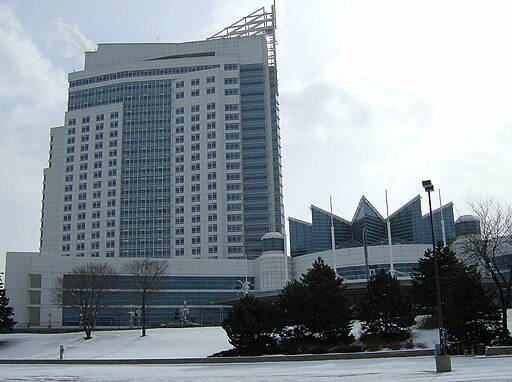Table of contents
Table of contents
Other Topics You May Like
The History of Gambling In Canada
History of Gambling: How Did Gambling Begin in Canada?

Gambling and games of chance have an extensive history in Canada stretching back well before the establishment of the nation itself. Various First Nations tribes integrated different types of games into social activities and spiritual rituals long before European settlers arrived. When colonists began populating what would become Canada, they brought their own gambling habits and pastimes along with them.
Over centuries, gambling has evolved to a heavily regulated, multi-billion dollar industry embedded in mainstream Canadian entertainment culture. Understanding this rich history provides insight into how gaming history became integrated into the life of Canadians despite periodic public concerns.
This in-depth post explores pivotal era and events that have shaped gambling in Canada over the past 500+ years. Get ready to journey through indigenous dice games, frontier halls, Prohibition-era underground betting, pivotal legislation changes, and the rise of modern casinos as we track the captivating story across Canadian history.
Origins of Gambling in Canada
The indigenous people of Canada participated in gambling pastimes like stick dice, bone dice, and a guessing game using hidden objects. Materials like carved wooden or stone dice, painted sticks, and teeth or ankle bones were used to generate random outcomes for betting and gameplay.
[quote_box quote="Long before Europeans reached the shores of North America, First Nations groups across the continent engaged in various games of chance and primitive gambling activities." quote_name=""]
Games evolved locally across Canada's varied First Nations groups. But common themes united them as socially enjoyable chance-based activities tied to community values. These early games laid the groundwork for gambling's enduring presence across Canadian history.
1380s
Some of the earliest recorded gambling activity from European settlers dates back to the 1380s. During this time, playing cards and dice games were common among French settlers in Acadia (now Nova Scotia). This remained a social pastime as more settlers arrived in Canada over the next few centuries. These early French settlers brought different traditions and knowledge of popular European card and dice games with them to the new colonies.
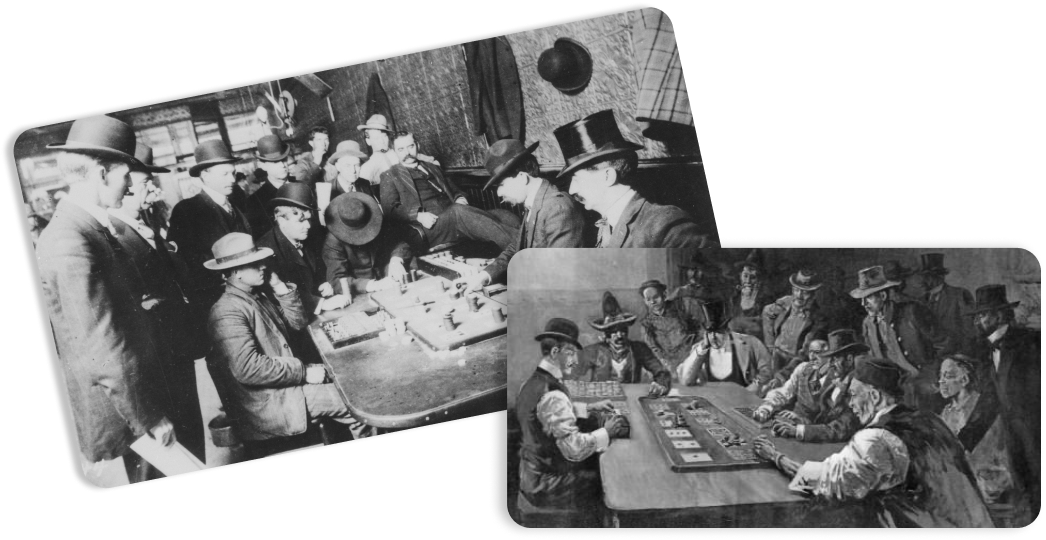
Frontier settlers far from home entertained themselves through various games of chance, like card games, dice, and lotteries. These activities reminded them of cultural traditions from their homelands. With limited recreation in remote areas, these games became a popular pastime. The popularity of such gambling among early Acadian settlers paved the way for similar activities to spread through other French and British colonies across Canada over the centuries.
Interestingly, back in Europe in the 1380s, long before Canada’s discovery, King Richard III of England had prohibited dice games. The monarch was concerned that his archers spent too much time playing dice and neglecting their duties. Fueled by fear over potential safety breaches, the king swiftly banned any and all dice games.
This early anti-gambling law did little to stop settlers from bringing dice traditions with them from Europe to establish Canada's first colonies. But it offers an interesting European comparison to the gaming culture thriving among Acadian settlers at the same time in the late 1300s.
In 1497
When John Cabot explored Canada's Atlantic coast, his crew engaged in games of chance during the voyage to pass the time. Playing dice and cards was a way for sailors to get through the boredom and isolation of long journeys across the ocean. These types of games had been an established tradition for seafarers coping with the tedium of extended voyages. Crews utilized simple dice and card games to get them through the days and bring them together.
One of the earliest known instances of gambling in Canada traces back to 1497, when John Cabot’s expedition landed in Newfoundland. The crew members of his ship likely engaged in common gaming practices of their home countries during the long journey across the Atlantic. This marks the first transmission of European gambling culture directly to Canadian shores.
Over the following century, as more European ships made expeditions to Canada, they further spread these activities by teaching games to Indigenous peoples they encountered through trade and early interactions. The crews brought new practices from their native lands and seeded them in the New World colonies.
In 1767
By 1767, once settlements were established in New France, gambling became inserted in community life. Residents regularly held lottery draws and raffles as popular methods to raise funds for civic causes. This whole process served as an important source of entertainment and charity in the growing colonies. As frontier towns developed into more established communities, fundraising lotteries became commonplace traditions.
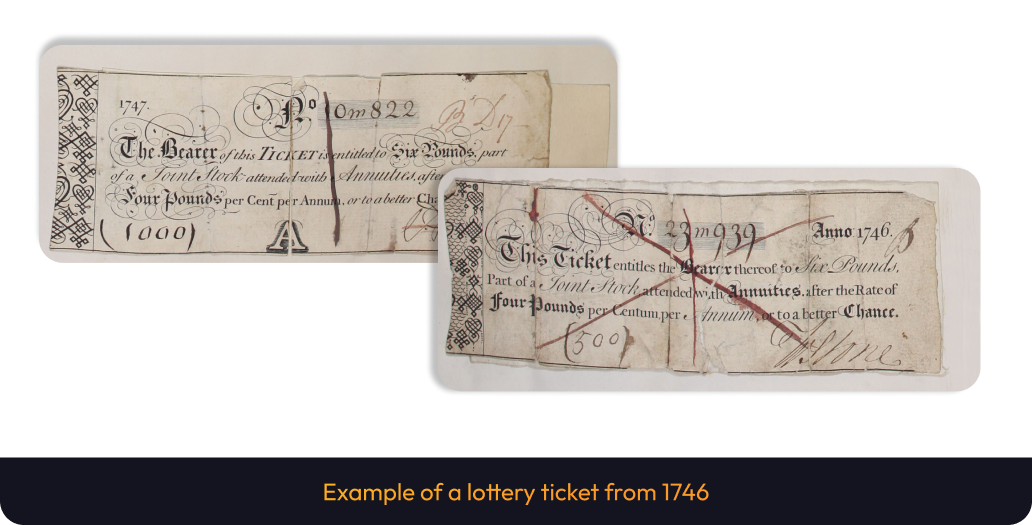
Lottery draws in the early colonies offered settlers entertainment while generating funds for infrastructure, churches, colleges and public works. Lotteries served as both recreation and community improvement. However, enthusiasm also opened the door for private lottery schemes aimed more at profit for exact people.
Concerns developed over questionable practices and oversaturation. Despite occasional crackdowns, lotteries remained popular into the 1800s, with informal underground activities continuing to thrive. The legacy of colonial lotteries established chance-based games as an approved form of entertainment and fundraising.
In 1892
In 1982, the Canadian Criminal Code officially outlawed most gambling activities across the country. However, these strict prohibitions were often ignored, especially in frontier towns where informal games remained popular. The 1892 anti-gambling bill marked one of the first attempts at national-level prohibition in Canada.
It reflected Victorian moral values and concern over corruption and addiction. But the far-reaching gambling ban proved difficult to enforce across all Canada's lands. Outlying communities largely ignored the unpopular federal dictate, and underground places to play persisted as a common appearance. Saloons, makeshift betting parlors, and gaming houses continued thriving discreetly, especially on the Prairies and in mining boom towns.
[quote_box quote="Underground gambling persisted as a common illicit pastime despite the nationwide prohibition." quote_name=""]
The Criminal Code gambling prohibition was thus undermined from the start by lack of public support. Despite the federal ban, games remained popular across 1890s Canada.
In 1900
Illegal gambling temporary casinos operated in major cities like Montreal and Toronto around the turn of the 20th century. Underground playing activities grew and did well despite laws. As Canada entered the new century, it became firmly established, especially in cities with concentrated wealth and leisure time.
An underground gambling industry served to high rollers and working-class gamblers alike. Crowded districts had illegal betting on cockfighting and prizefighting. Meanwhile fancy customers secretly played illegal card and dice games in secret casinos hidden behind respectable fake buildings. Corruption allowed these unlicensed operations to grow openly.
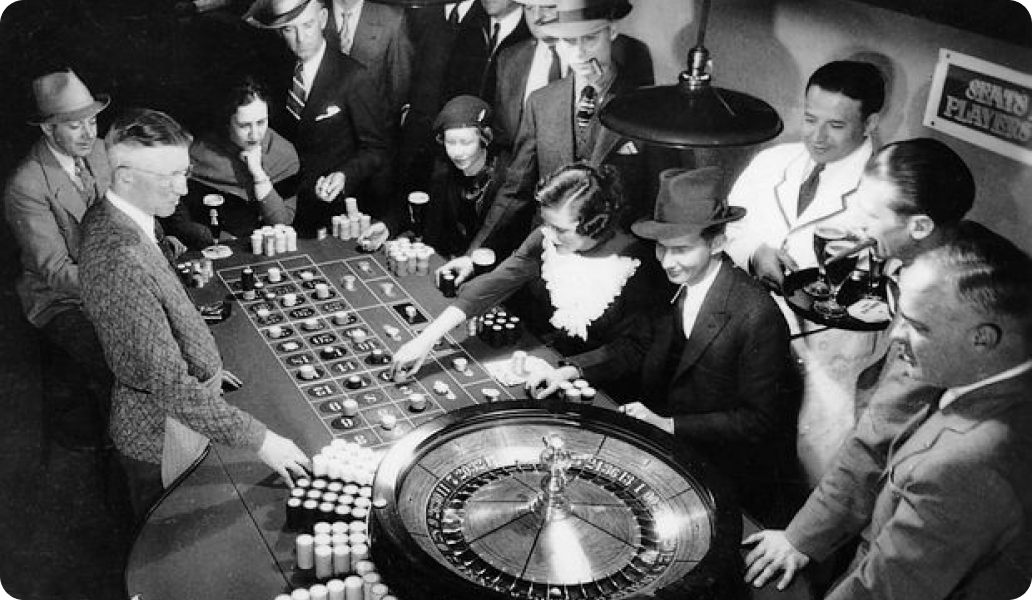
Gambling prohibition mostly proved unenforceable in the face of popular demand. This drove further drift toward legal permissions and regulation rather than outright bans. A culture of illegal casinos paved the way for eventual legalization.
In 1925
A change to Canada's Criminal Code made legal betting at racetracks. This opened the door for legalized venues and events focused on horse racing. The 1925 change marked a major shift toward legal regulated gambling in Canada after decades of prohibition.
Allowing on-track race betting acknowledged public demand for betting options and the failures of the anti-gambling act. By permitting only controlled on-site betting, the law enabled horse racing betting without opening the floodgates to casinos. Legitimizing race meets let officials regulate and profit from betting through taxation, rather than leaving it as an uncontrolled black market.
The move reflected society’s changing views, softening on gambling bans in favor of targeted regulation. For the first time in decades, average Canadians could engage in lawful betting in plain sight. The new horse racing exemption opened the door for future liberalization like lotteries and casinos.
In 1969
The federal government changed the Criminal Code again, allowing provincial governments to operate lottery systems. This was a major shift that paved the way for provincially-run lotteries and gaming corporations.
[quote_box quote="After decades of provincial calls for expanded legal gambling, the federal government finally ceded lottery regulation powers to the provinces in 1969." quote_name=""]
This decentralization let each province establish locally-controlled lottery systems tailored to regional tastes, from lottery ticket games to charity bingos. Provincial lottery revenues soon proved an advantage for government budgets, funding everything from hospitals to schools.
The Criminal Code change admitted that nationwide gambling prohibitions were outdated in postwar Canada. Letting each province control this within its borders proved a pragmatic agreement between morality concerns and public demand. Once Canadians saw tax benefits and popularity of provincially-run gambling, the door opened further for casinos, slots, sports betting and other gaming.
In 1970
Canada's first legal lottery games were launched, including Loto Quebec and the Interprovincial Lottery Corporation. Lottery ticket sales generated revenue for government programs and cultural funding. Following the 1969 Criminal Code change, provinces wasted no time launching provincially-operated lottery products, starting with the inaugural 1970 Loto Quebec draw.
These early provincial lotteries generated tens of millions in annual revenue and profits for public coffers. Lotteries proved enormously popular with Canadians, becoming a harmless diversion and socially approved form of gambling. Lottery participation became a civic duty and entertainment ritual, with multimillion dollar jackpots fuelling ticket fever. The incredible success of pioneering provincial lotteries dispelled any lingering doubts over legalizing public gambling. Lotteries established the template for provinces to expand into casinos, sportsbooks and other gaming deemed taboo just decades prior.
In 1974
The introduction of video lottery terminals (VLTs) increased access to electronic gambling games in designated venues across provinces. VLTs, introduced in the 1970s, brought digital slots and arcade-style games into pubs, casinos, and corner stores.
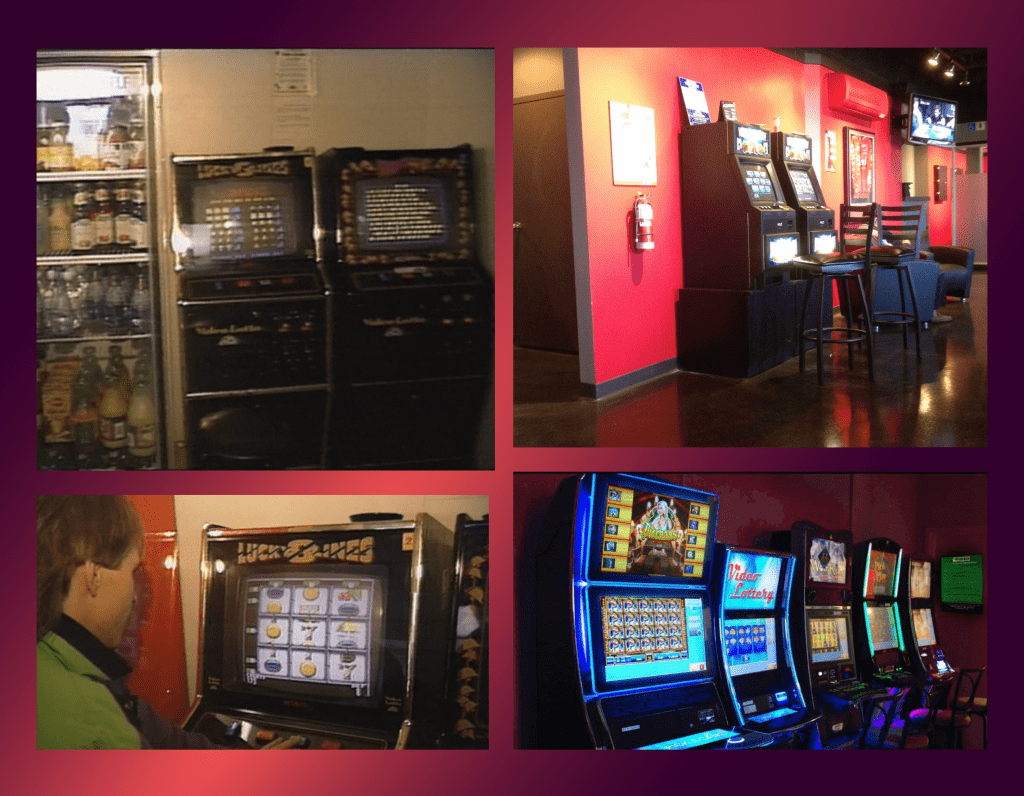
Their convenience and slot machine-style play appealed to Canadians. VLTs became a hugely popular nationwide gambling activity. They generated massive provincial revenues through a centralized e-gaming network. But their ubiquity raised concerns about excessive habits. Despite criticisms, VLTs succeeded in mainstreaming legal electronic gaming. Later, this digital gateway opened the way for online betting and smartphone apps to deliver on-demand gaming. The VLT boom showed that legal gambling no longer carried social stigma in Canada. It rather cemented its status as mainstream entertainment.
Additionally, in 1974, Canada's first Olympic lottery was held to raise funds for the 1976 Montreal Olympics. The lottery aimed to offset the massive costs of hosting the games and building facilities. It helped bring public lotteries into the mainstream as accepted large-scale public financing. Revenues from the Olympic lottery proved a major success, funding the 1976 Games and setting a precedent for future sports event fundraising lotteries. This innovative lottery set an important precedent in Canada for using legal gambling to support major events and infrastructure projects.
In 1985
In 1985, charity casinos were legalized, allowing nonprofits to hold casino events to raise funds. Soon, permanent charity casinos opened, expanding legal gambling options. Enabling charity casinos in the 1980s showed the government was becoming more comfortable with gambling expansion when it benefited moral causes. Nonprofits holding licensed casino nights normalized casino gaming as harmless entertainment while generating millions for charity.
[quote_box quote="The popularity and economic benefits smoothed the path for permanent charity casinos, and later full-fledged resort casinos." quote_name=""]
In 1989
The Kahnawake Mohawk Territory near Montreal opened the first legal private casino in Canada, flouting federal and provincial gaming laws. This sparked further debate around gambling regulations. When the federally unrecognized Kahnawake reserve opened a large private casino in 1989, it challenged provincial monopolies. As an independent First Nations territory, Kahnawake claimed the right to offer gaming outside federal and Quebec provincial regulations.

The Mohawk Casino operation used uncertainty about indigenous gambling jurisdiction. This bold First Nations gaming venture proved hugely successful. Its unchecked success showed demand and the economic potential of casinos. Soon, several provinces followed suit in opening permanent government-run casinos. The Kahnawake reserve's pioneering casino established First Nations as influential future players in Canada's gambling industry. It forced authorities to address indigenous groups claiming gaming autonomy.
In 1994
In 1994, several provinces opened government-run permanent casinos, including Casino Windsor in Ontario. Large resort casinos with slots, table games, and amenities became part of Canada's gaming landscape. By the mid 1990s, provinces competed fiercely to attract gambling tourism dollars through glitzy Las Vegas-style casino resorts. These permanent casinos offered many slot machines, poker, roulette, craps, sportsbooks and more. Provincial governments became both casino gaming regulators and profit-seeking operators.
Сasino resorts like Casino Niagara and Casino de Montreal aimed to attract high rollers and vacationers. First Nations groups also collaborated with provinces on major casino projects, like Casino Rama in Orillia, Ontario. These permanent casinos made gambling a centerpiece of tourism and entertainment, generating billions in annual revenue. Their success demonstrated that casinos were accepted as mainstream leisure destinations. The rapid 1990s casino expansion entrenched legal gambling firmly across Canada, creating a thriving new industry through provincially-sanctioned gaming.
Current Gambling Situation in Canada
Today, most forms of gambling are legal across Canada's provinces and territories, though regulations vary. Lottery games, casinos, racetracks, bingo halls, and licensed online betting sites operate within a regulated framework.
Gambling remains a popular recreation enjoyed in moderation by millions of Canadians, and an important government revenue source through licensing. National and provincial lotteries offer games like Lotto Max, generating funds for programs. Permanent casinos in every province provide slots, tables, sports betting, and more, with amenities varying regionally.
Betting on horse racing is legal at tracks across Canada, remaining an important cultural tradition. Bingo halls and licensed charity gaming allow low-stakes gambling supporting nonprofits through community-embraced fundraising. First Nations legally operate unique casinos on reserves under indigenous gaming regulations, often in remote locations, with these distinct Canadian indigenous casinos thriving.
Regulated online sportsbooks, poker sites, and casinos certified by provinces offer remote real-money gaming. While regional values shape local laws, gaming has shed stigma to become a mature, tolerated entertainment option nationwide. Responsible gambling resources help minimize risks and support healthy play.
If you're looking to keep rolling with the latest trends and hottest opportunities in Canadian online casinos, Gambillion is your source for actual info. We go all in to bring you honest, in-depth reviews of top real money gaming sites along with the top bonuses and promotions you won't find anywhere else. Wish you luck!


















